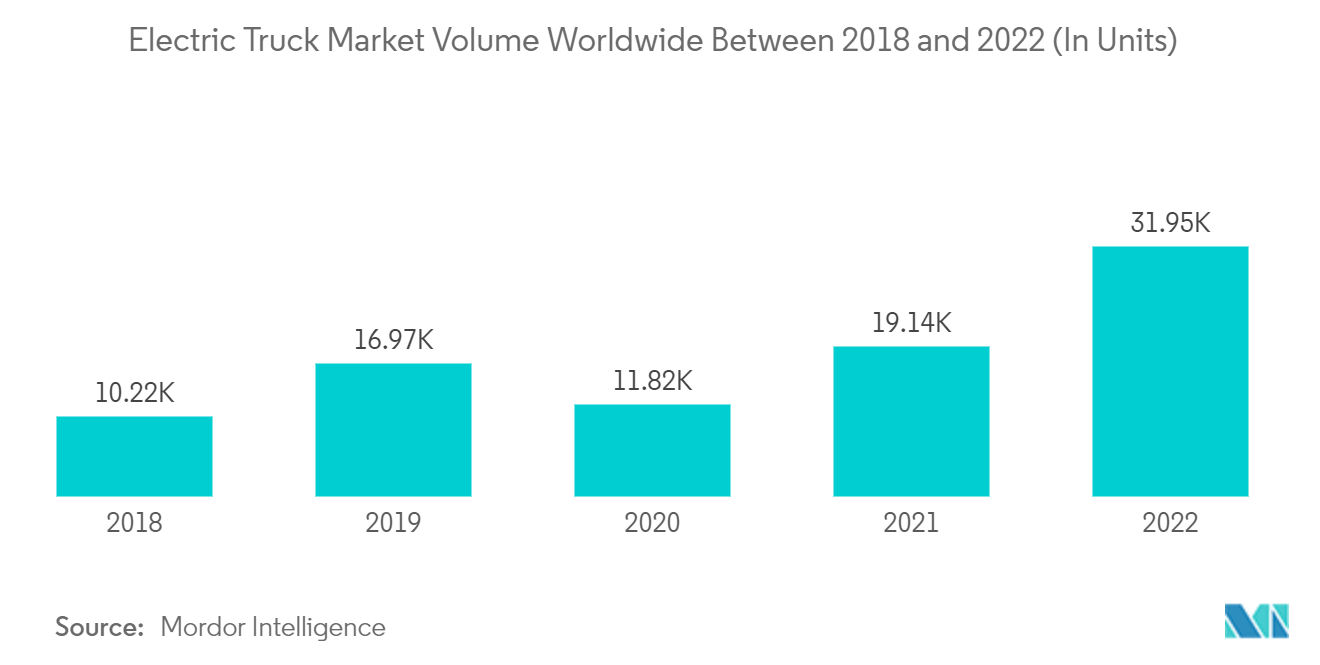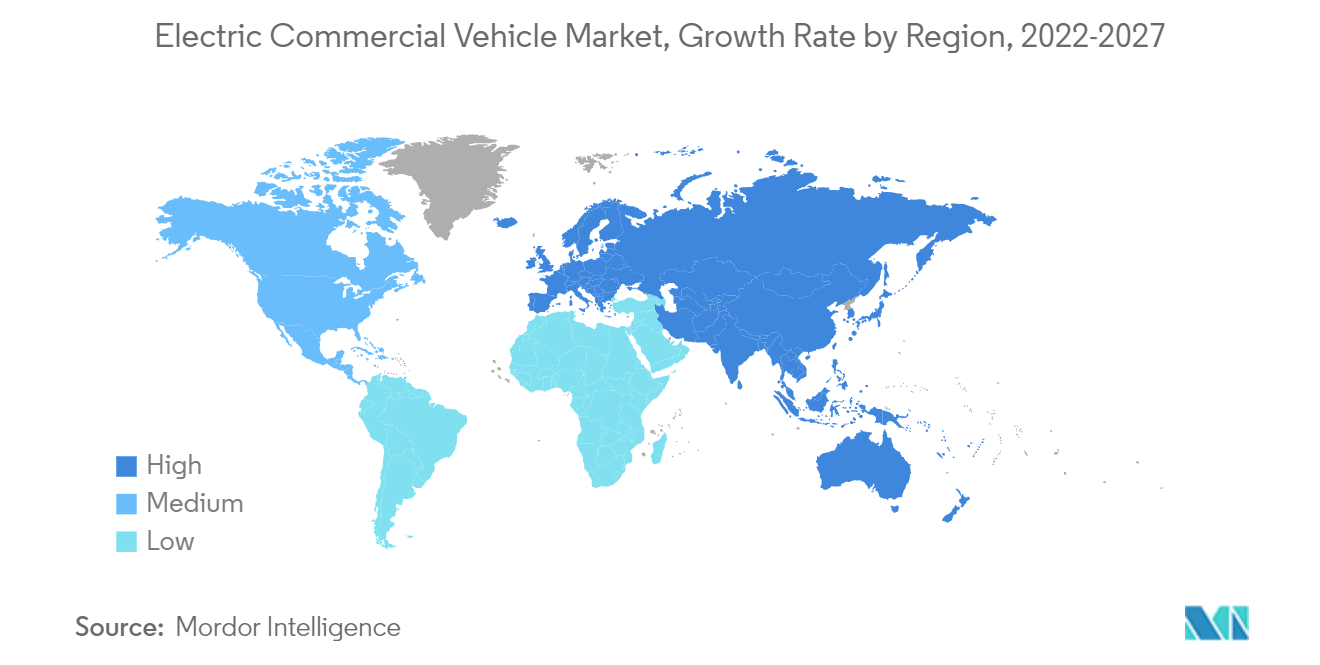Market Trends of Electric Commercial Vehicle Industry
Stringent Emission Regulations are Fueling the Market Growth
- With growing environmental concerns, governments and environmental agencies are enacting stringent emission norms and laws that may increase the manufacturing cost of electric drivetrains and fuel-efficient diesel engines in the coming years.
- Heavy-duty vehicles are responsible for roughly one-quarter of the EU's CO2 emissions from road transport. Emissions in this sector have risen yearly since 2014, with a drop only in 2020 due to the COVID-19 pandemic. The primary cause of this trend for trucks is increased freight transport demand. It is partially offset by increased energy efficiency in road freight transportation. A combination of changes is required to contribute to the goal of a climate-neutral EU, including faster improvements in energy efficiency, a shift to vehicles with lower emissions, and/or more efficient transportation modes.
- Europe has set ambitious emission reduction targets to combat climate change. Tighter regulations, especially in urban areas, are aimed at reducing pollution and encouraging the introduction of electric vehicles (EVs). These regulations, such as low emission zones and stringent emission standards, are encouraging fleet managers to switch to electric commercial vehicles. Governments across Europe offer various incentives to encourage the uptake of electric vehicles. These incentives include purchase subsidies, tax incentives, and subsidies for building charging infrastructure. This help offset the high acquisition costs of electric vans, making them more economically attractive to fleet operators.
- In the United States, the Environmental Protection Agency (EPA) and National Highway Traffic Safety Administration (NHTSA) have proposed the implementation of the Safer Affordable Fuel-Efficient (SAFE) vehicles rule to be implemented from 2021 to 2026. The rule may set corporate average fuel economy standards and greenhouse gas emissions for passenger and light trucks. Major players are also getting involved in the government's green drive by developing electric trucks. For instance,
- In November 2022, VIA Motors announced a collaboration with EAVX, JB Poindexter & Co.'s (JBPCO's) newest business unit, to develop fully electric Class 2-5 electric work trucks.
- All these aforementioned factors and developments are expected to drive demand in the market and likely contribute to faster adoption of e-mobility across the truck segment over the forecast period.

Asia-Pacific is Expected to Lead the Market
- For instance, in November 2022, The Ministry of Land, Infrastructure, Transport, and Tourism of Japan increased its support for the use of green number plates on commercial vehicles. In the 2nd supplementary budget for the fiscal year that ends in March 2023, the Ministry included an additional budget of JPY 2.12 billion. It has also asked for funding for a commercial electrified vehicle promotion project in the fiscal year 2023.
- The Chinese government is encouraging people to use electric vehicles. The country has already announced plans to phase out diesel fuel, which is used in nowadays, tractors and construction equipment. According to Chinese authorities, by 2035, all new vehicles sold in China must be powered by "new energy." Half of them must be electric, fuel cell, or plug-in hybrid vehicles, with the other half being hybrid vehicles. The state governments in India are including electric buses in their fleet to convert their ICE fleet of buses and reduce operational costs while also reducing carbon emissions and improving air quality. For instance,
- January 2022: The Delhi government launched 100 electric buses. They became part of the state's public transportation fleet. According to the Delhi Government, an additional 300 electric buses will be added to the city's existing fleet of 100 e-buses. Furthermore, the state plans to buy 2,000 more e-buses over the next few years.
- Japan has one of the world's best electric vehicle ecosystems. Toyota and Nissan, for example, are taking steps to build electric vehicles in the country. The presence of a large number of electric vehicle charging stations in the country, which outnumber the petrol and diesel outlets, can be used to gauge the developments in the hybrid and electric vehicle market. These favorable factors are expected to drive the market and demand for commercial electric vehicles in Japan. Moreover, government funding is also backing the growth of the electric commercial vehicle market in Japan.
- For instance, in November 2022, The Ministry of Land, Infrastructure, Transport, and Tourism of Japan increased its support for the use of green number plates on commercial vehicles. In the 2nd supplementary budget for the fiscal year that ends in March 2023, the Ministry included an additional budget of JPY 2.12 billion (USD 0.02 billion). It has also asked for funding for a commercial electrified vehicle promotion project in the fiscal year 2023.

